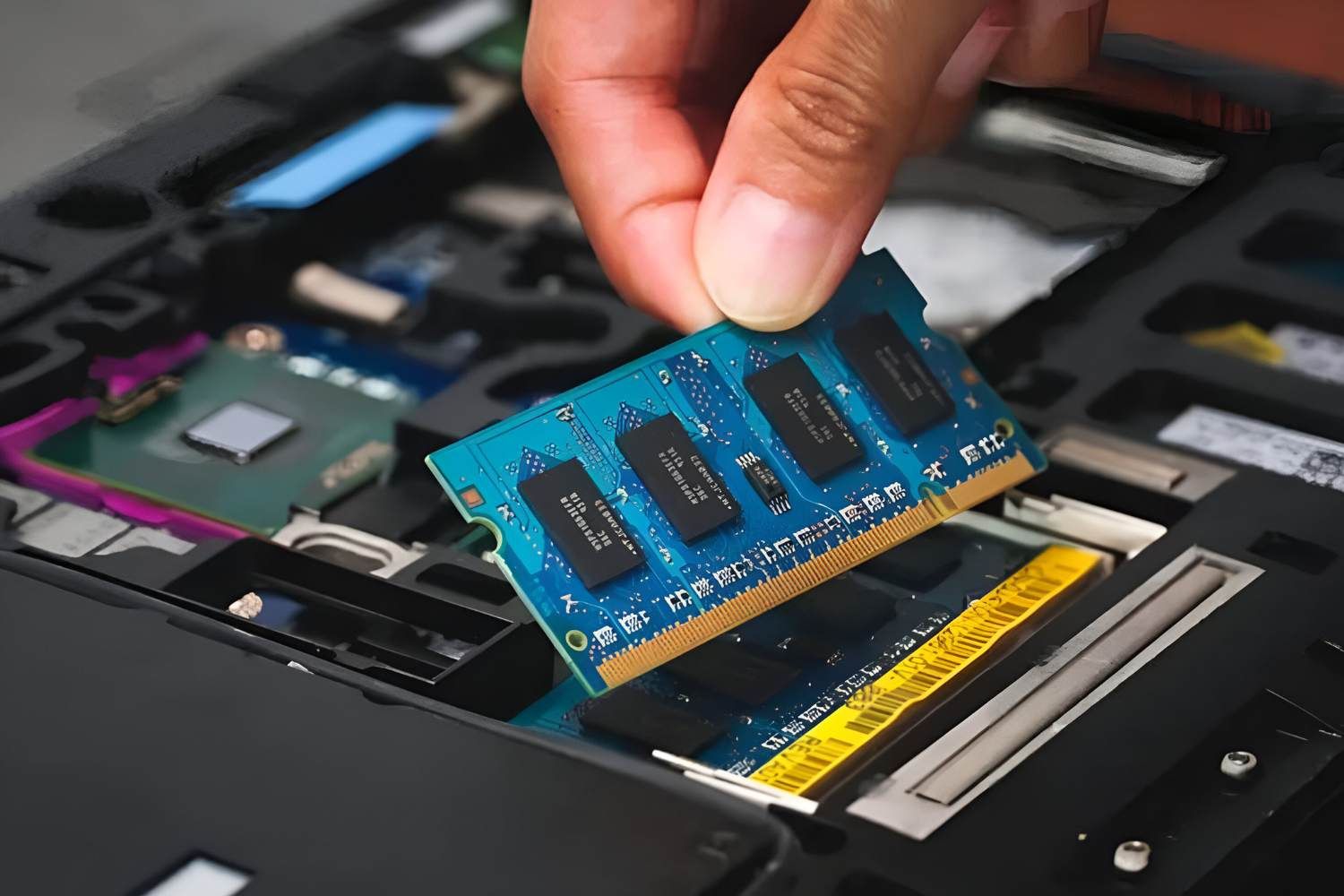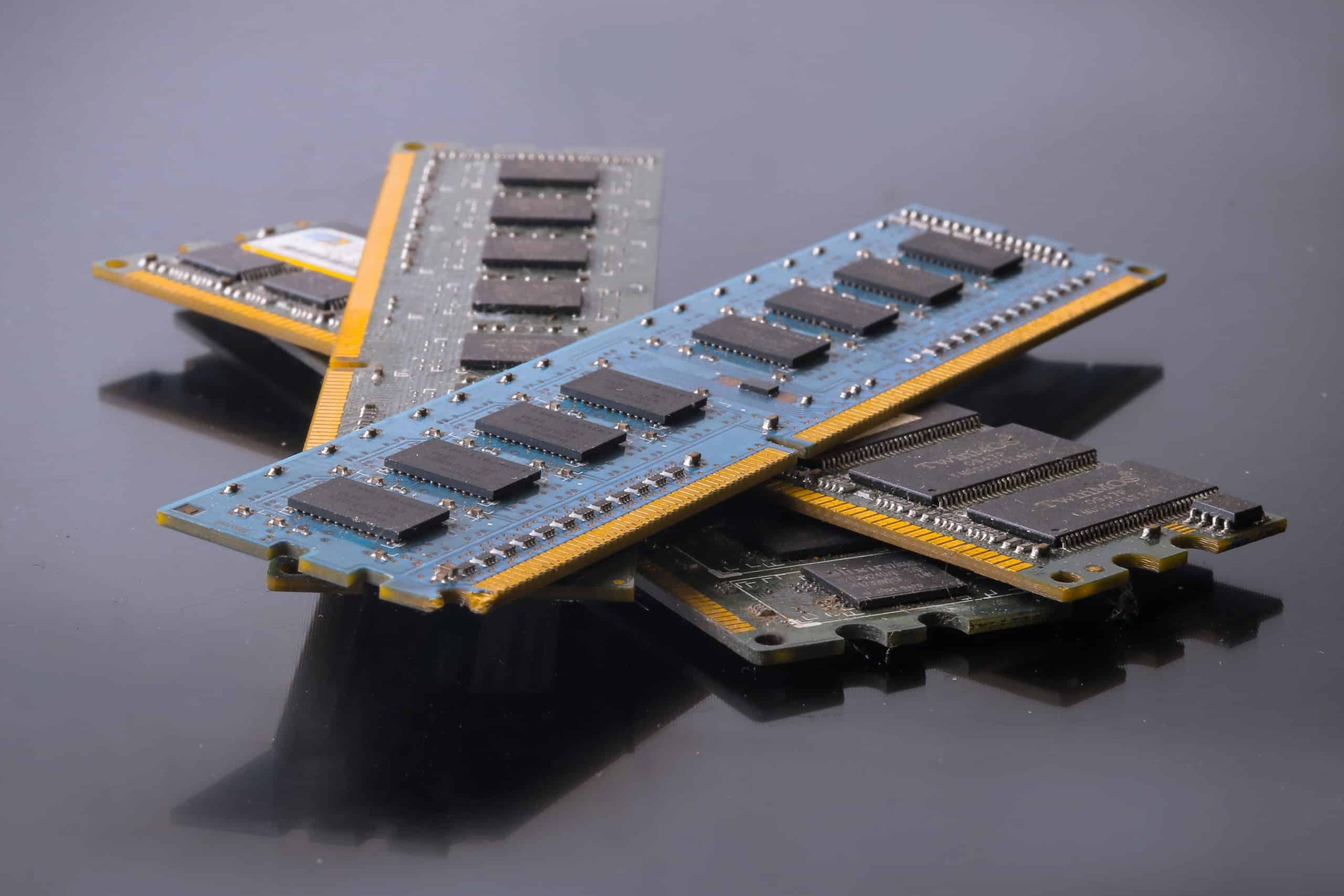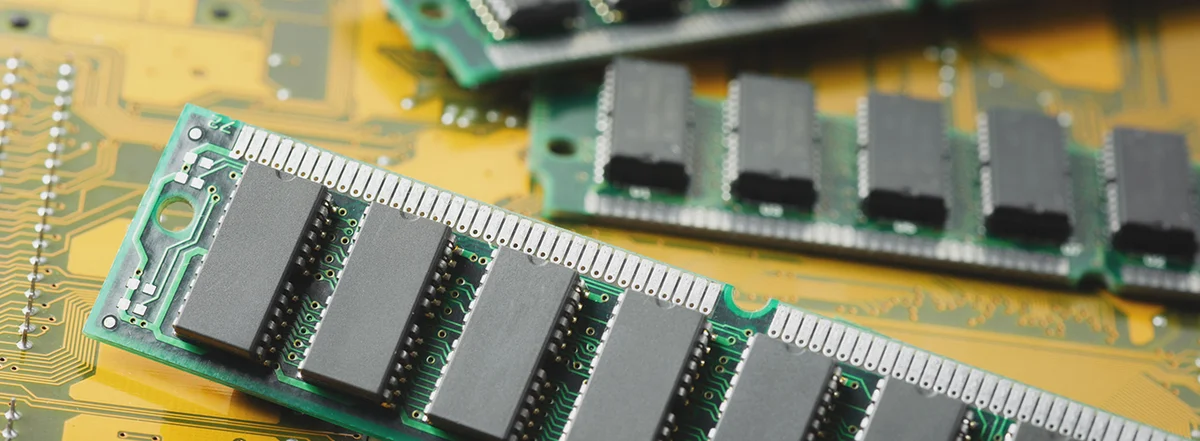Introduction
Welcome to the world of computer hardware, where numerous components work together to give us the incredible computing power we rely on every day. From CPUs to GPUs, SSDs to HDDs, it’s a complex ecosystem of technology that enables us to accomplish a wide range of tasks. One such essential component is RAM, which stands for Random Access Memory.
RAM plays a crucial role in determining the performance and responsiveness of our computers. It serves as a temporary storage space for the data and instructions that are actively being used by the processor. Without RAM, our computers would struggle to handle multiple tasks simultaneously and perform efficiently.
However, when it comes to purchasing RAM, there are various specifications and terminologies to navigate. One term that often perplexes users is “CL,” which stands for CAS Latency. CL is an important metric to consider when selecting the right RAM for your system, as it has a direct impact on the speed and responsiveness of your computer.
In this article, we will explore the meaning of CL on RAM, its significance, and how it affects your computer’s performance. We will also discuss the factors to consider when choosing the appropriate CL for your specific needs, ensuring that you make an informed decision when upgrading your RAM.
What is a RAM?
Before we dive into the intricacies of CL on RAM, let’s first understand what RAM actually is. RAM, or Random Access Memory, is a type of computer memory that provides quick access to data that is actively being used by the CPU. Unlike other forms of storage, such as hard drives or solid-state drives, RAM is volatile memory, meaning it loses its contents when the power is turned off.
RAM acts as a temporary storage space for data and instructions that the CPU needs to access quickly. Whenever you open an application, launch a program, or load a file, the relevant data is temporarily transferred from the storage drive and stored in RAM, allowing the processor to quickly access and manipulate the information. This quick access enables smooth multitasking and faster execution of programs.
The size of the RAM determines how much data can be stored and accessed simultaneously. Modern computers typically have a RAM capacity ranging from 4GB to 64GB or more, depending on the system’s requirements and the user’s needs. The more RAM a computer has, the more efficiently it can handle complex tasks and multitasking.
RAM is an integral component of a computer’s overall performance. Insufficient RAM can lead to sluggish performance, frequent freezing, and even crashing of programs. On the other hand, having an adequate amount of RAM ensures smooth and responsive operations, especially when dealing with resource-intensive applications like video editing software, gaming, or running virtual machines.
Now that we have a basic understanding of RAM, let’s move on to understanding the significance of CL on RAM and how it affects the overall performance of your computer.
What is CL on RAM?
CL, or CAS Latency, is a timing measurement that represents the delay between the moment a memory controller requests data from RAM and the moment that data is provided by the RAM module. In simpler terms, it measures the time it takes for the RAM to respond to a request for data.
CAS stands for Column Address Strobe, which refers to a signal sent by the memory controller to select a specific column of memory in the RAM module. Latency, on the other hand, refers to the delay in time when retrieving data from a specific column. So the combination of CAS and latency gives us the CAS Latency, represented by a numerical value.
The CL value is measured in clock cycles, with the lower number indicating a faster response time. For example, a RAM module with a CAS Latency of 9 will respond faster than a module with a CAS Latency of 15 when the memory controller requests data.
It’s important to note that CL is just one aspect of RAM’s overall performance. It doesn’t tell us about the speed at which data can be transferred or the total bandwidth of the RAM. Other factors like the RAM’s frequency (measured in MHz) and the memory timings (such as tRCD and tRP) also contribute to the overall performance.
The CL value is often mentioned as part of the RAM module’s specifications. For example, you might come across RAM modules labeled as “DDR4-3200 CL16” or “DDR3-1600 CL9.” In these examples, the CL value is 16 for DDR4-3200 and 9 for DDR3-1600.
Now that we have a clear understanding of what CL on RAM represents, let’s explore why it is an important factor to consider in your RAM selection.
Why is CL important?
When it comes to RAM, CL is an important consideration because it directly impacts the overall speed and responsiveness of your computer. A lower CL indicates a faster response time, meaning the RAM can quickly provide the data requested by the memory controller. On the other hand, a higher CL value indicates a longer delay in responding to data requests.
So, why is CL important? Well, a lower CL allows your computer to retrieve data from RAM more quickly, resulting in improved overall system performance. This is especially noticeable when running memory-intensive tasks such as gaming, video editing, or running virtual machines. With a lower CAS Latency, you can experience smoother multitasking, reduced lag, and faster application loading times.
However, it’s essential to note that the impact of CL on performance might not be as significant in everyday computing tasks, like web browsing or word processing. These tasks generally do not require a high level of memory bandwidth or low latency. So, for typical everyday usage, the difference between CL values might be less noticeable.
On the other hand, if you’re a professional gamer, content creator, or someone who regularly utilizes memory-intensive applications, choosing a RAM module with a lower CL can make a noticeable difference in performance. The faster response time can provide a competitive advantage in gaming or reduce rendering times for video editing projects.
Furthermore, CL becomes more important when you start overclocking your RAM. Overclocking is the process of pushing your RAM beyond its default speed specifications to achieve higher performance. When overclocking, having RAM with a lower CAS Latency is beneficial as it allows for more headroom in achieving higher speeds without sacrificing stability.
Overall, the importance of CL lies in its direct impact on the speed and responsiveness of your computer. Choosing RAM with an appropriate CL value for your specific needs can significantly enhance your overall computing experience, particularly when dealing with memory-intensive tasks.
How is CL measured?
CL, or CAS Latency, is measured in clock cycles. Clock cycles are the fundamental units of time in a computer’s clocking system, determining the speed at which operations are executed. So when we talk about CL, we are referring to the number of clock cycles it takes for the RAM module to respond to a request for data.
The CL value is typically represented as a numerical figure, such as CL16 or CL9. This number represents the minimum number of clock cycles that it takes for the RAM module to respond to a data request from the memory controller. The lower the CL value, the faster the response time. For example, a module with a CL9 latency will respond faster than a module with a CL16 latency.
It’s important to understand that the CL value is not necessarily an exact measurement of time in seconds or milliseconds. Instead, it is relative to the clock speed of the RAM module. For example, if you have DDR4 RAM running at a clock speed of 3200MHz, a CL16 latency would mean that it takes 16 clock cycles to respond to a data request. The actual time it takes will vary depending on the clock speed.
When comparing different RAM modules, it’s essential to consider both the CL value and the clock speed together to get a more accurate understanding of their performance. A lower CL value is desirable, but it’s also crucial to ensure that the RAM module has a suitable clock speed to complement the CL value effectively.
It’s worth noting that RAM modules with higher clock speeds often have higher CL values. This is because faster clock speeds can compensate for the slightly higher latency and still provide excellent performance. So, when choosing RAM, it’s crucial to find the right balance between clock speed and CL value based on your specific needs and budget.
Manufacturers often provide specifications for their RAM modules, including the CL value, clock speed, and other important timings. These specifications can help you make an informed decision when selecting RAM that best suits your requirements.
Now that we understand how CL is measured and represented, let’s explore what a lower CL value means and how it affects RAM performance.
What does a lower CL mean?
A lower CL, or CAS Latency, value indicates a faster response time of the RAM module. In other words, it means that the RAM can quickly provide the requested data to the memory controller. The lower the CL value, the fewer clock cycles it takes for the RAM to respond, resulting in improved overall system performance.
When you have RAM with a lower CL, it reduces the amount of time the CPU has to wait for data, allowing for faster data retrieval and processing. This reduced latency is particularly beneficial in tasks that heavily rely on memory bandwidth, such as gaming, video editing, and running multiple applications simultaneously. With a lower CL, you’ll experience smoother multitasking, reduced loading times, and improved overall system responsiveness.
For example, let’s say you have two identical RAM modules, but one has a CL14 latency, and the other has a CL16 latency. In memory-intensive tasks, the module with CL14 will respond faster and provide data to the CPU more quickly, resulting in a smoother and more efficient performance.
It’s worth noting that the difference in performance between different CL values may not always be noticeable in everyday computing tasks that are not highly memory-intensive. Tasks like web browsing, word processing, or watching videos generally do not benefit significantly from lower CL values. However, if you regularly engage in activities that demand high memory bandwidth or require fast data access, a lower CL can make a noticeable difference.
Additionally, a lower CL value can be particularly useful when overclocking your RAM. Overclocking involves pushing your RAM beyond its default speed settings to achieve higher performance. When overclocking, having RAM with a lower CAS Latency gives you more headroom to increase the clock speed while maintaining stability. This can lead to even greater performance gains in memory-intensive tasks.
However, it’s important to keep in mind that RAM with lower CL values often comes at a higher cost. This is because producing RAM modules with lower latency requires more precise manufacturing processes, which can increase the price. Therefore, it’s essential to weigh the performance benefits against your budget when considering RAM with lower CL values.
Now that we understand the significance of a lower CL, let’s explore the implications of a higher CL value on RAM performance.
What does a higher CL mean?
A higher CL, or CAS Latency, value indicates a slower response time of the RAM module. In simple terms, it means that it takes more clock cycles for the RAM to provide the requested data to the memory controller. A higher CL value can have implications for the performance and overall speed of your computer.
When you have RAM with a higher CL, it means that the CPU has to wait longer for the data requested, resulting in increased latency. This can lead to slightly slower overall system performance, particularly in memory-intensive tasks. The higher CL value means that the RAM takes more time to provide the data, which can result in slightly slower data retrieval and processing speeds.
For example, if you have two identical RAM modules, but one has a CL16 latency, while the other has a CL14 latency, the module with CL16 will respond slower, leading to a slight decrease in overall system performance compared to the module with the lower CL value.
However, it’s important to note that the difference in performance between different CL values may not be noticeable in everyday computing tasks that are not heavily dependent on memory bandwidth. For tasks like web browsing, word processing, or media consumption, the impact of a higher CL value is negligible. These tasks usually do not require fast data access or high memory bandwidth.
Additionally, a higher CL value may not significantly impact performance in systems with lower clock speeds. The overall performance of RAM is a combination of various factors, including clock speed, memory timings, and total bandwidth. While a higher CL value may slightly affect performance, it may not be a limiting factor if the other specifications of the RAM module (such as clock speed) are well-suited for the specific system requirements.
Moreover, it’s essential to consider that RAM modules with higher CL values often come at a lower cost compared to modules with lower latency. If budget constraints are a consideration, choosing RAM with a higher CL value allows you to allocate your budget for other components or prioritize a higher amount of RAM capacity, which can provide greater benefits in certain scenarios.
Although a higher CL value may result in a slight decrease in performance, it is important to remember that it is a relative measure. RAM modules with higher CL values still offer substantial performance benefits compared to older or lower-speed RAM modules. The performance impact of CL becomes more apparent when performing memory-intensive tasks or running applications that heavily rely on memory bandwidth.
Now that we understand the implications of a higher CL value, let’s explore how CL impacts overall RAM performance.
How does CL impact performance?
The CAS Latency (CL) of RAM directly impacts its performance by determining how quickly the RAM can respond to data requests from the memory controller. The CL value represents the number of clock cycles it takes for the RAM to retrieve and deliver the requested data. Understanding how CL impacts performance is crucial in determining the overall speed and responsiveness of your computer.
A lower CL value indicates a faster response time, allowing the RAM to quickly provide data to the CPU. This leads to improved overall system performance, especially in memory-intensive tasks that require fast data access and high memory bandwidth. A lower CL enables smoother multitasking, reduced loading times for applications, and improved responsiveness.
Conversely, a higher CL value means a slower response time and increased latency. This can have a slight impact on the performance of memory-intensive tasks, resulting in slightly slower data retrieval and processing speeds. However, the difference in performance between different CL values may not be noticeable in everyday computing tasks or tasks that do not heavily rely on memory bandwidth.
When evaluating the impact of CL on performance, it’s important to consider other factors such as the clock speed (frequency) of the RAM. Higher clock speeds can help compensate for a higher CL value by providing faster data transfers. Balancing the CL value with the clock speed is crucial in maximizing RAM performance.
In addition to the direct impact on response time, the CL value can also influence the overclocking potential of the RAM. When overclocking RAM, a lower CL value generally provides more headroom for achieving higher clock speeds while maintaining stability. This can result in further performance gains in memory-intensive tasks.
It’s worth noting that the impact of CL on performance may vary depending on the specific use case and the other components in your system. For tasks that rely heavily on memory bandwidth, such as gaming, video editing, or running virtual machines, a lower CL can lead to noticeable improvements in performance. However, for everyday computing tasks with moderate memory usage, the impact may be minimal.
Ultimately, when choosing RAM, it’s important to strike a balance between a lower CL value and other factors like clock speed, capacity, and price. Consider your specific needs and budget to determine the optimal combination of specifications that will provide the best performance for your system.
Now that we have explored the impact of CL on RAM performance, let’s discuss how to choose the appropriate CL for your specific needs.
How to choose the right CL for your needs?
Choosing the right CAS Latency (CL) for your RAM ultimately depends on your specific needs, budget, and the performance requirements of your system. Here are some factors to consider when selecting the appropriate CL:
- Intended Use: Consider the primary use of your computer. If you mostly engage in everyday computing tasks like web browsing, word processing, or media consumption, a moderate CL value should be sufficient. However, if you’re a gamer, content creator, or regularly perform memory-intensive tasks, opting for a lower CL can offer noticeable performance benefits.
- Budget: RAM modules with lower CL values often come at a higher cost. Determine how much you are willing to invest in RAM and prioritize other specifications like capacity and clock speed. Remember that other factors, such as clock speed and total bandwidth, also contribute to overall performance.
- Compatibility: Ensure that the RAM module you choose is compatible with your system’s motherboard. Check the supported RAM speeds and CL values specified by the motherboard manufacturer to ensure compatibility.
- Overclocking: If you plan to overclock your RAM for enhanced performance, opting for a lower CL value can provide more flexibility and headroom for achieving higher clock speeds while maintaining stability.
- Reviews and Recommendations: Consider reading reviews and seeking recommendations from reputable sources or experienced users. They can provide insights into the performance and compatibility of different RAM modules, including their CL values.
Ultimately, the decision on the right CL value for your needs is a trade-off between performance, budget, and other specifications. It’s important to strike a balance that complements your specific requirements and provides optimal performance for your system.
Remember that RAM is just one component of a larger system, and overall performance is a combination of multiple factors. Consider evaluating the combination of clock speed, capacity, and CL value to ensure the best performance for your specific use case.
Now that we have discussed how to choose the right CL for your needs, let’s wrap up the article.
Conclusion
RAM plays a vital role in the performance and responsiveness of our computers, and understanding the significance of CAS Latency (CL) is crucial when selecting the right RAM for your needs. CL represents the delay in time between the memory controller requesting data from the RAM and the RAM module providing that data.
A lower CL indicates a faster response time, resulting in improved overall system performance. It allows for smoother multitasking, reduced loading times, and increased responsiveness, especially in memory-intensive tasks. On the other hand, a higher CL value means a slower response time, which can slightly impact performance, particularly in tasks that heavily rely on memory bandwidth.
When choosing the right CL for your needs, consider factors such as your intended use, budget, compatibility with your system, and the potential for overclocking. Finding the optimal balance between CL, clock speed, and other specifications will ensure the best performance for your specific requirements.
Remember that RAM performance is a combination of various factors, including CL, clock speed, capacity, and other memory timings. Each of these factors should be evaluated together to achieve the desired level of performance without compromising stability or breaking your budget.
By understanding CL and its impact, you can make an informed decision when upgrading or purchasing RAM for your computer. Whether you’re a gamer seeking competitive advantage, a content creator working with large files, or an everyday user looking for a smooth computing experience, selecting the right CL value will contribute to improved overall system performance.
Now armed with this knowledge, you can confidently navigate the world of RAM and choose the optimal CL value to power your computer and achieve the performance you desire.

























